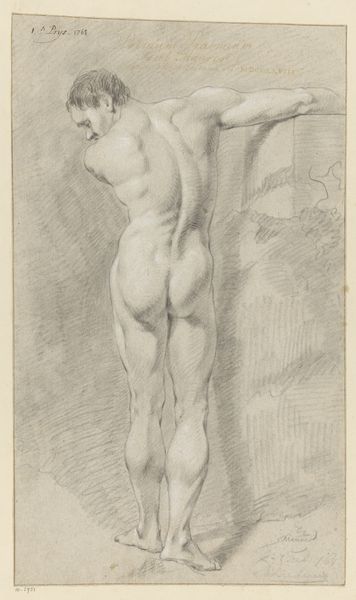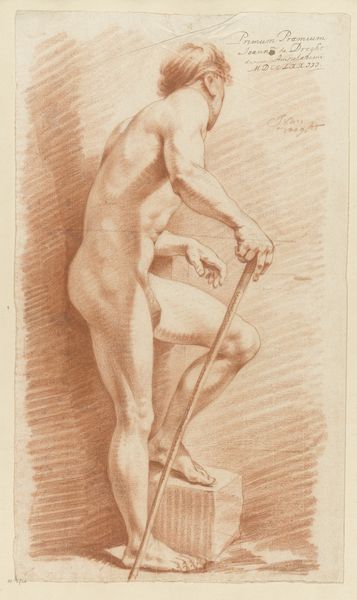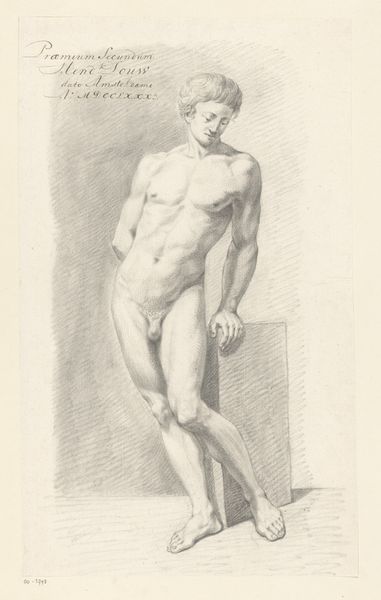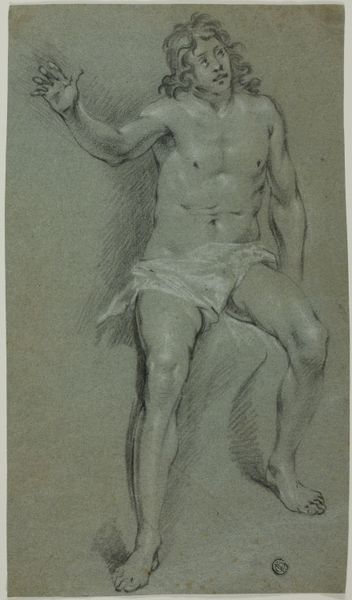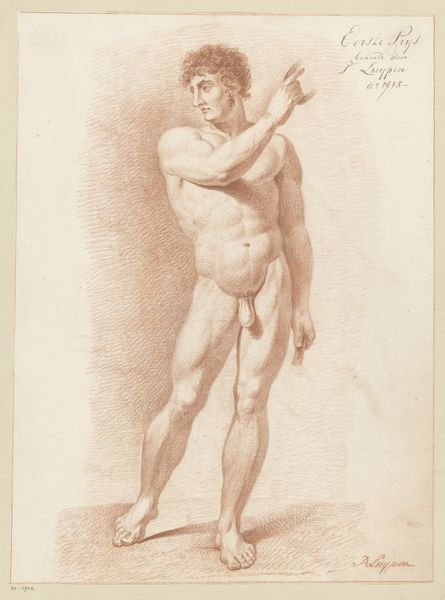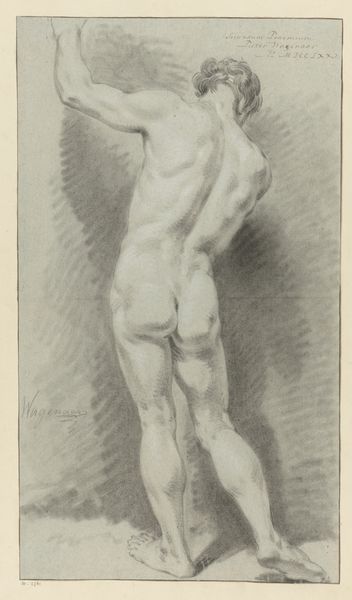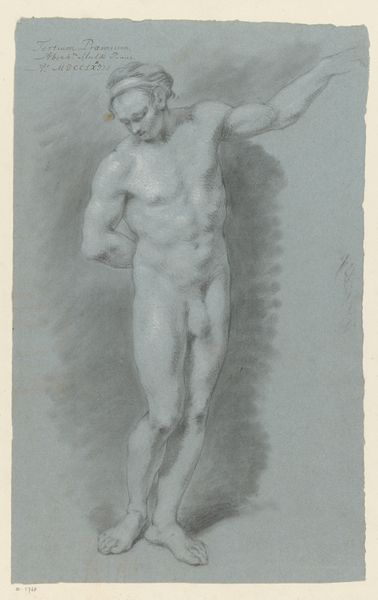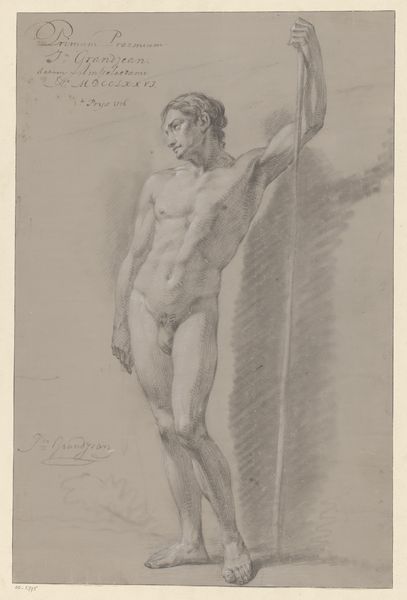
drawing, pencil
#
drawing
#
baroque
#
figuration
#
pencil drawing
#
pencil
#
academic-art
#
nude
Dimensions: height 455 mm, width 274 mm
Copyright: Rijks Museum: Open Domain
Editor: This is Bernard Picart’s "Standing Naked Man with Raised Leg," a pencil drawing from 1719. I'm struck by how idealized and confident the figure seems. What do you see in this piece, particularly within the context of its time? Curator: This drawing, while seemingly a straightforward study of the male nude, is deeply embedded in the power dynamics of the Baroque era. The 'idealized' male form was often used to symbolize authority, rationality, and a patriarchal vision of society. Editor: So, it's not just about aesthetics, it's also communicating a specific idea about masculinity? Curator: Precisely. And the fact that it’s a drawing, likely made in an academic setting, reveals a system of learning that reinforced these ideals. How might this relate to contemporary conversations around representation and the male gaze? Consider who is typically given the artistic space to create these images, and who is being represented. Editor: That's interesting, it makes me think about who gets to define beauty and power, even today. It challenges the perceived neutrality of art from the past. I always thought this was just a nice drawing, now it has some political charge to it! Curator: Absolutely. By questioning the dominant narratives perpetuated through art like this, we can create space for more diverse and inclusive representations. Hopefully, this is an inspiring reminder to see art and the world with critical eyes. Editor: Definitely! Thank you. I now see that analyzing art isn’t just about what is on the surface, but what it says about culture.
Comments
No comments
Be the first to comment and join the conversation on the ultimate creative platform.
